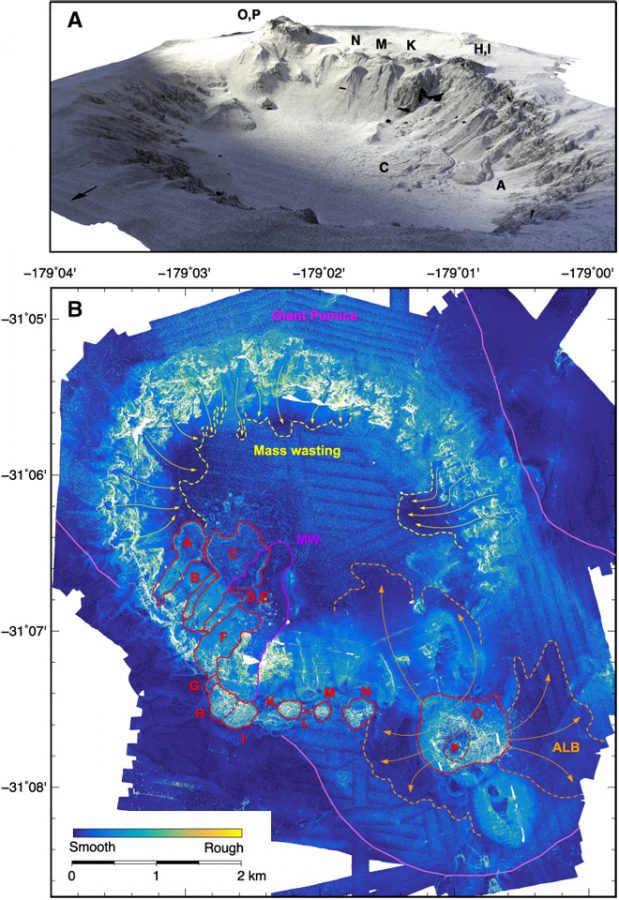Robert sent in this link at https://crev.info/2018/01/hidden-volcano-comes-light/ … a deep ocean silicic volcano erupted under the waves 5 years ago but hardly anyone noticed. In 2012 the Havre volcano in the Kermradic arc (new Zealand) erupted with rhyolite magma and was only recognised from a pumice raft seen in satellite imagery. Since then mapping, observations, and sampling by submersibles have provided lots of information. The lava came out of at least 14 vents in the ocean floor at depths of 990 and 1220m. Most of the erupted material appears to have been transported elsewhere by the ocean currents but there remain some remarkable pillars of pumice …

 … It seems 70 per cent of earth's magma output takes place under the oceans. There have been others too, most recently in the Tonga and Marianau arcs. However, the behaviour of deep silicic submarine vents is much less well known. As silica is what flint and chert are made of, or sand come to that, one can begin to understand how flint may have formed in the Cretaceous – as after all that geological period came to an end with the Chicxulub impact. Were there other major events in the Cretaceous as after all the chalk is divided into three distinct episodes and subdivided by very hard chalk deposits that represent periods of sea floor formation (and lasting a considerable amount of time). This is most obvious as burrows can be found in the hard chalk bands but not in the softer chalk deposits (which may have been laid down more quickly). Do vents play a role in order to produce the flint (nodules as well as tabular flint layers that seep into cracks and faults in the chalk).
… It seems 70 per cent of earth's magma output takes place under the oceans. There have been others too, most recently in the Tonga and Marianau arcs. However, the behaviour of deep silicic submarine vents is much less well known. As silica is what flint and chert are made of, or sand come to that, one can begin to understand how flint may have formed in the Cretaceous – as after all that geological period came to an end with the Chicxulub impact. Were there other major events in the Cretaceous as after all the chalk is divided into three distinct episodes and subdivided by very hard chalk deposits that represent periods of sea floor formation (and lasting a considerable amount of time). This is most obvious as burrows can be found in the hard chalk bands but not in the softer chalk deposits (which may have been laid down more quickly). Do vents play a role in order to produce the flint (nodules as well as tabular flint layers that seep into cracks and faults in the chalk).
